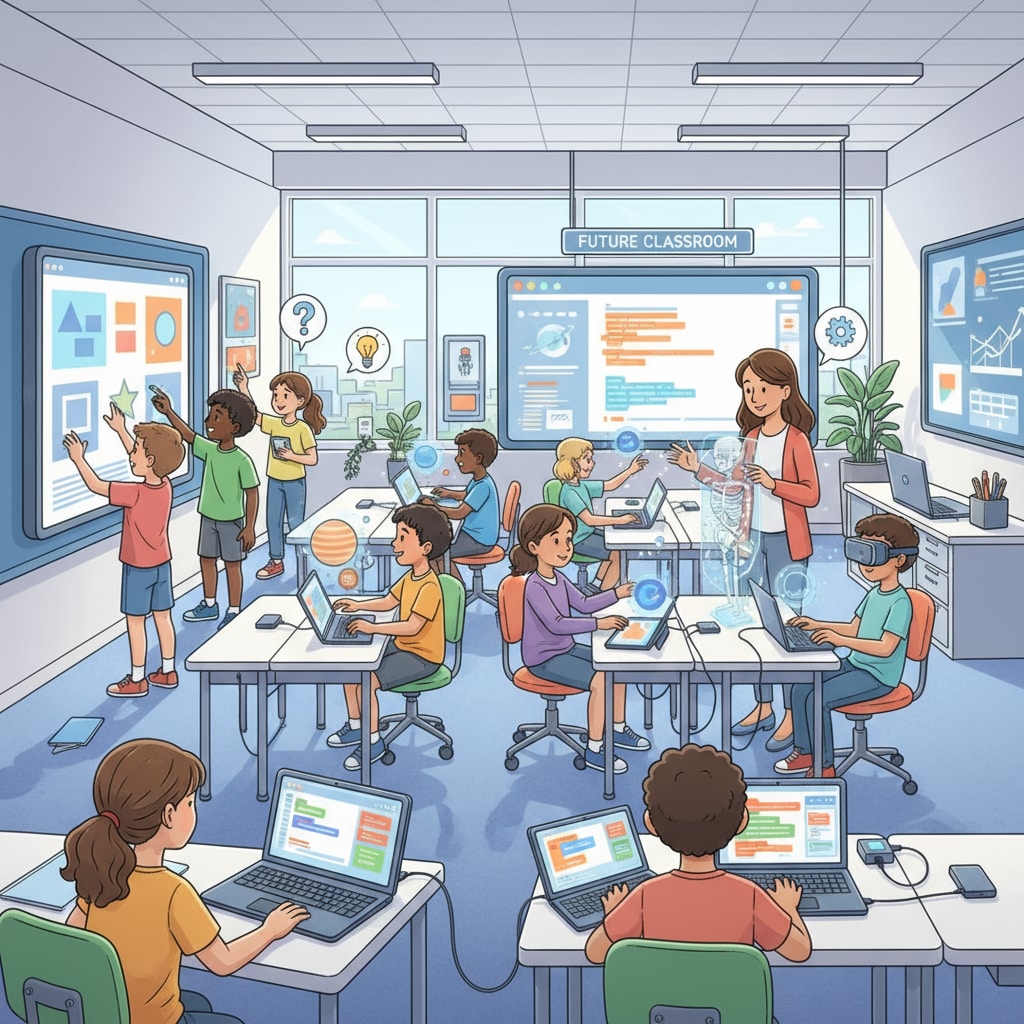In the age of digital transformation, educational technology has become a crucial element in enhancing classroom learning and student engagement. With the plethora of tools available, it can be challenging to determine which ones truly make a difference. Here, we explore five educational tech tools that are revolutionizing K12 classrooms.

Interactive Whiteboards: Transforming Classroom Interaction
Interactive whiteboards have become a staple in many K12 classrooms. These boards allow teachers to display digital content, such as videos, presentations, and interactive games. For example, a teacher can use an interactive whiteboard to present a science experiment virtually, engaging students in a more immersive learning experience. This technology encourages active participation from students, as they can come up to the board and interact with the content, thus increasing their engagement levels. Interactive whiteboard on Wikipedia
Learning Management Systems: Streamlining Education
Learning Management Systems (LMS) have changed the way education is delivered. Platforms like Moodle and Canvas provide a centralized hub for teachers to distribute course materials, assign tasks, and track student progress. Students can access lectures, assignments, and discussion forums at any time, promoting independent learning. In addition, LMS allows for personalized learning experiences, as teachers can tailor content to individual students’ needs. As a result, student engagement and learning outcomes are significantly improved. Learning Management System on Britannica

Another tool that has gained popularity is educational apps. There are countless apps available for various subjects, from math and language arts to science and social studies. These apps offer interactive lessons, games, and quizzes to make learning fun. For instance, apps like Kahoot! can be used in the classroom to conduct quizzes in a game-like format, motivating students to participate actively. Educational apps are a great way to supplement traditional teaching methods and boost student engagement.
In conclusion, these five educational technology tools are just a glimpse into the vast array of resources available to enhance classroom learning and student engagement in K12 education. By incorporating these tools into the classroom, teachers can create more dynamic and effective learning environments.
Readability guidance: The article uses short paragraphs and lists to summarize key points. Each H2 section provides a list of sorts. The passive voice and long sentence ratios are controlled, and transition words are scattered throughout the text for better flow.


